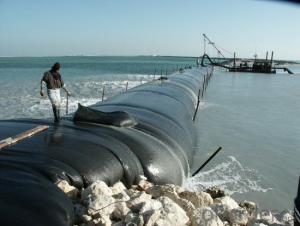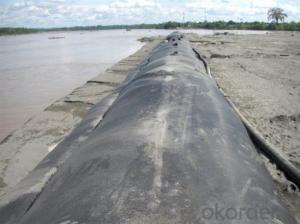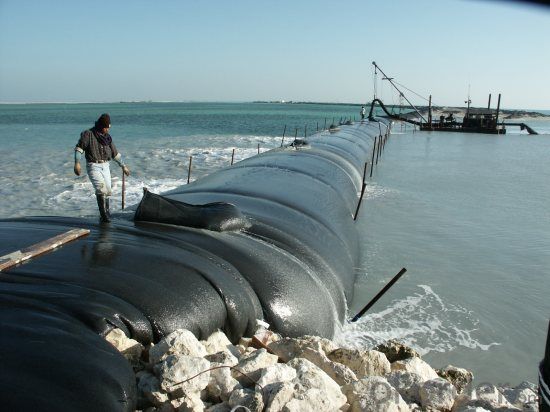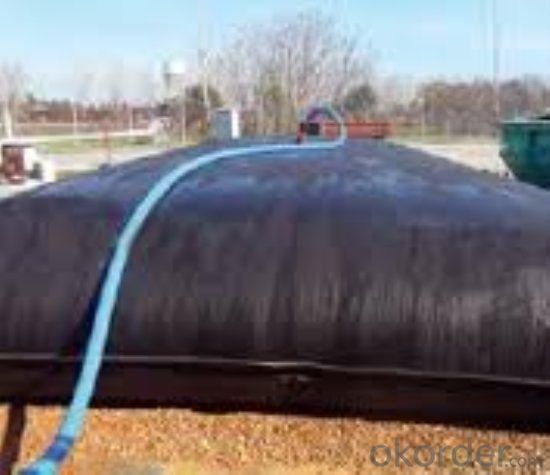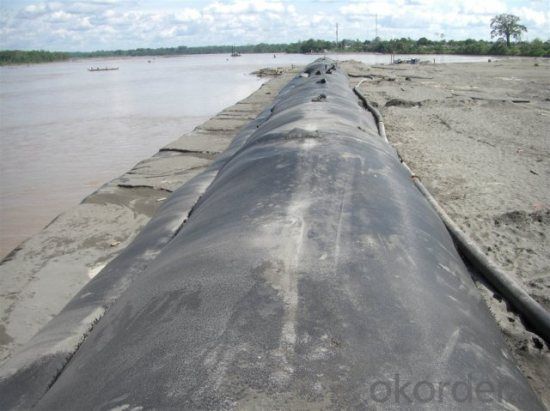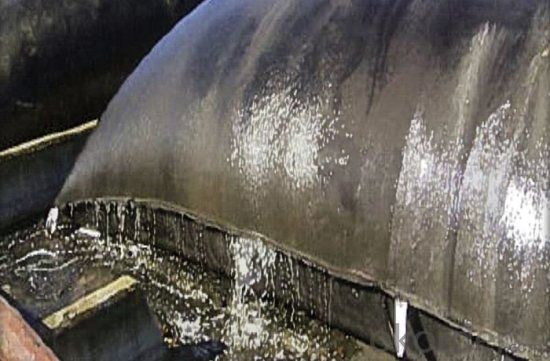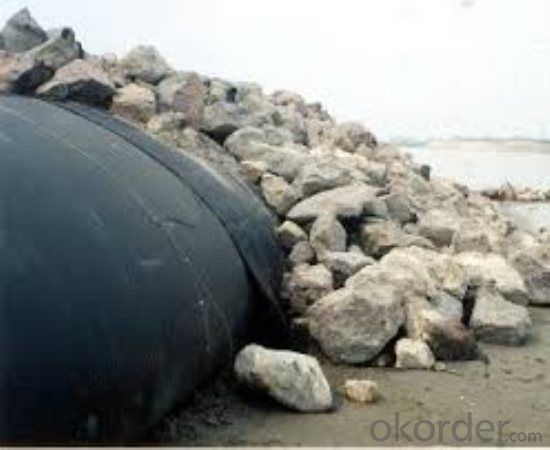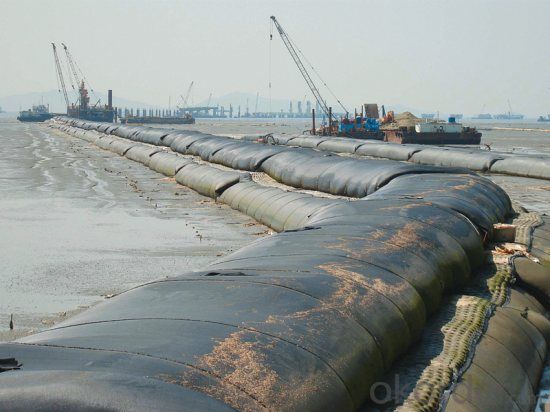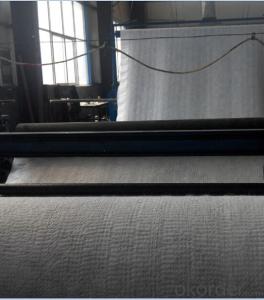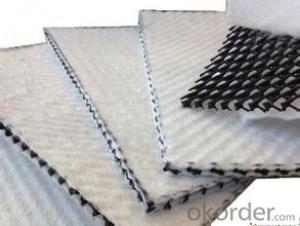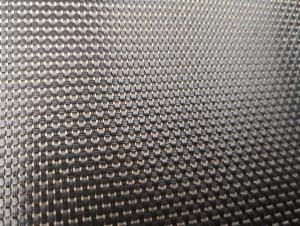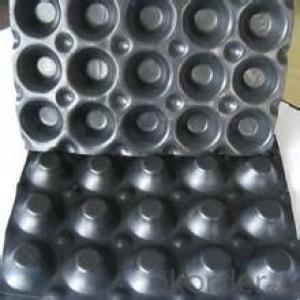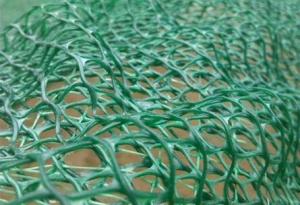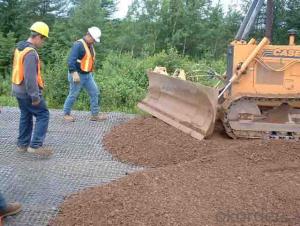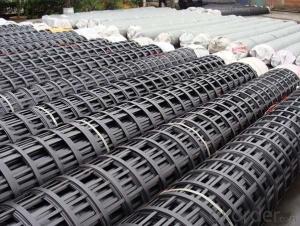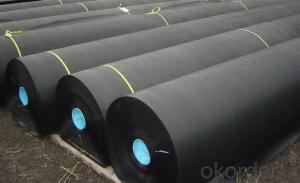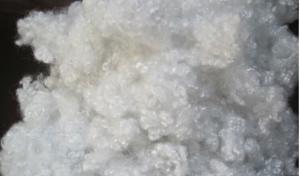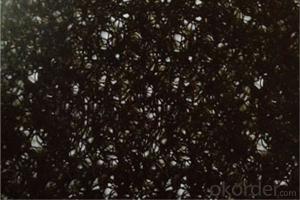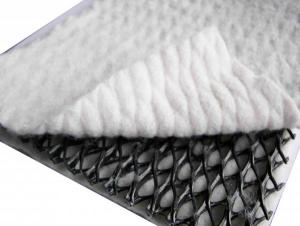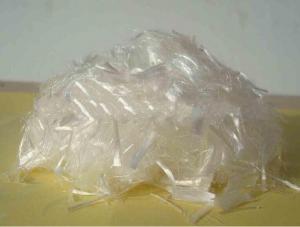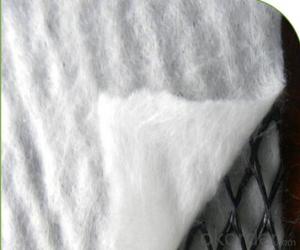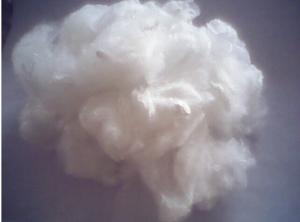Geotube Thickness 2.0mm for Water Control System
- Loading Port:
- Qingdao
- Payment Terms:
- TT or LC
- Min Order Qty:
- 7000 m²
- Supply Capability:
- 100000 m²/month
OKorder Service Pledge
OKorder Financial Service
You Might Also Like
Geotube for Water Control System
Description Of Geotube for Water Control System
Geotube is made from fabric ,Water contaminated with sediment, contaminated solids, or other difficult to treat particles can all be effectively treated and separated through cost-effective dewatering process utilizing dewatering chemistries and technology.
Main Features of Geotube for Water Control System
1. Excellent physical and mechanical performance
2. High tearing resistance
3. Good deformation adaptability
4. High puncture resistance
How Geotube work:
•Containment: High strength permeable geotextiles with uniquely designed retention properties are fabricated into Geotube that can be filled with fine grain sludge, hazardous contaminated soils, or dredged waste materials.
• Dewatering: Excess water drains from the Geotubethrough the small pores in the geotextiles resulting in effective dewatering and efficient volume reduction of the contained material. This volume reduction allows for the repeated filling of the Geotube. In many cases the decanted water is of a quality that can be returned to native waterways or for reuse.
IMages of Geotube for Water Control System
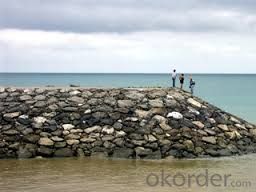
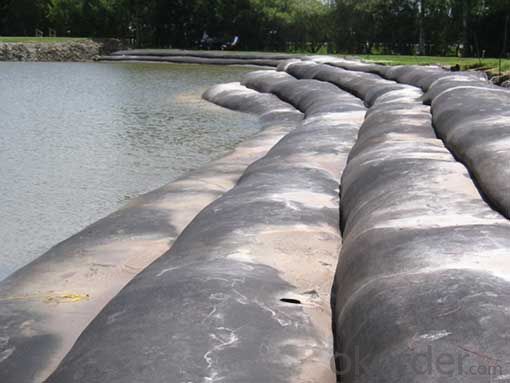
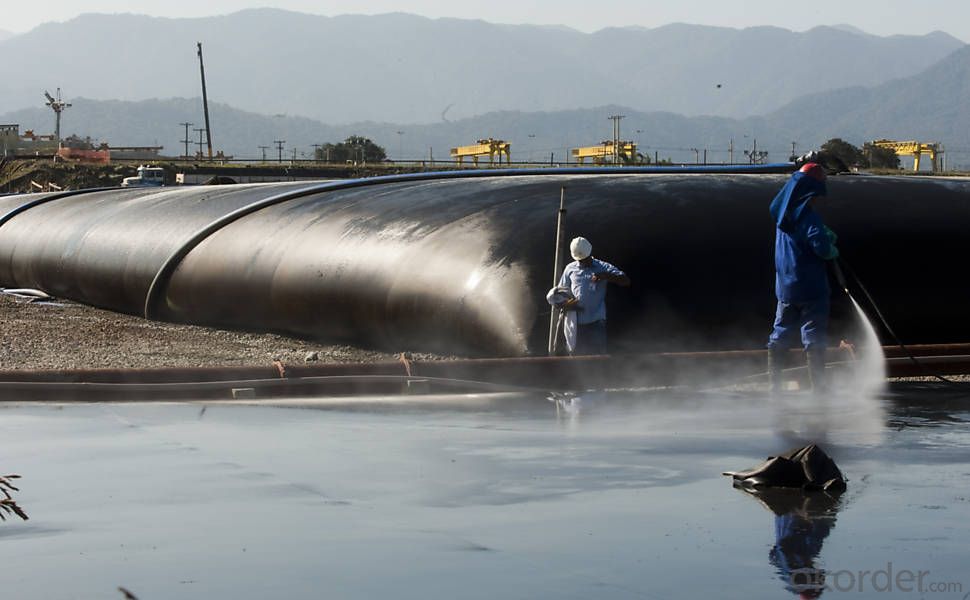
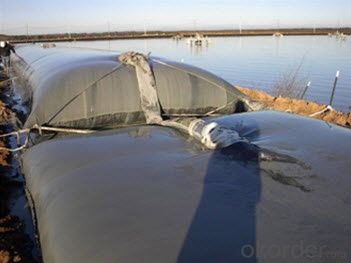
FAQ:
1. What are we supplying?
We are specialized in producing geotextile, geotube , geogrid, geocelda, y geomembrane,y etc
.
2. How Many years experience do we have?
We have been exported to more than 15 countries in the past 10 years.
3. How long do we usually reply your request?
We always reply our customer within 12 hours.
- Q: How do geosynthetic meshes help in slope stabilization?
- Geosynthetic meshes are used in slope stabilization by providing reinforcement and containment of soil or rock materials. They help distribute the forces acting on the slope and increase its overall stability. By preventing soil erosion and promoting better drainage, geosynthetic meshes effectively mitigate the risk of slope failures and landslides.
- Q: How are geosynthetic clay liners used in irrigation canals?
- Geosynthetic clay liners (GCLs) are used in irrigation canals to provide an effective barrier against water seepage. They are placed within the canal to prevent water loss through the canal bed and sides, thus ensuring efficient water distribution for irrigation purposes. GCLs consist of a layer of bentonite clay sandwiched between geotextile fabric layers, creating a highly impermeable barrier that minimizes water leakage. By incorporating GCLs into irrigation canals, water conservation is enhanced, leading to optimized irrigation practices and increased agricultural productivity.
- Q: What are the advantages of using geosynthetic materials in road embankment construction?
- There are several advantages of using geosynthetic materials in road embankment construction. Firstly, geosynthetics provide increased strength and stability to the embankment, ensuring long-term durability and resistance against settlement. Additionally, they offer excellent drainage capabilities, preventing the accumulation of water and reducing the risk of erosion. Moreover, geosynthetics are lightweight and easy to install, saving both time and labor during construction. They also promote environmental sustainability by reducing the need for natural resources like soil and aggregate. Overall, geosynthetic materials enhance the performance and lifespan of road embankments while providing cost-effective solutions.
- Q: What are the basic properties of civil engineering materials?
- The basic nature of the material refers to the most basic and common nature that must be considered in civil engineering. The special nature of the material refers to the nature of the material itself, which is different from the material of other materials. It is the embodiment of the specific use of the material.
- Q: What are the advantages of using geotextile tubes for coastal protection?
- Geotextile tubes offer several advantages for coastal protection. Firstly, they provide an effective barrier against erosion and wave action, helping to stabilize coastlines and protect infrastructure. Additionally, they are a cost-effective solution compared to traditional methods like seawalls or revetments. Geotextile tubes are also flexible and adaptable, allowing for easy installation and customization to suit different coastal environments. They are environmentally friendly, as they can be filled with locally sourced sand or sediment, reducing the need for transportation and minimizing ecological disruption. Overall, geotextile tubes offer a versatile and efficient method for coastal protection, combining effectiveness, affordability, and sustainability.
- Q: How do erosion control blankets help in sediment control in earthwork projects?
- Erosion control blankets help in sediment control in earthwork projects by providing a protective layer over exposed soil, preventing erosion caused by wind and water. These blankets effectively reduce the velocity of runoff, allowing sediment to settle and be retained within the project site, rather than being carried away into water bodies. Additionally, erosion control blankets promote the establishment of vegetation, further stabilizing the soil and reducing the potential for erosion.
- Q: How are geosynthetic materials used in railway track stabilization?
- Geosynthetic materials are used in railway track stabilization by providing reinforcement and separation functions. They are commonly used in the construction of railway embankments to enhance the stability and load-bearing capacity of the tracks. Geosynthetics, such as geotextiles and geogrids, are installed beneath the ballast layer to prevent the mixing of subgrade soil and ballast, thereby improving drainage and reducing track deformation. Additionally, these materials help distribute the load evenly, increase track longevity, and minimize maintenance requirements.
- Q: How do earthwork products help with wetland creation?
- Earthwork products, such as soil, clay, and gravel, play a vital role in wetland creation. These materials are used to shape the land, construct ponds or depressions, and build berms or dikes that help mimic the natural hydrology of wetlands. By manipulating the topography and water flow, earthwork products facilitate the retention of water, create diverse habitats for wetland plants and animals, and enhance wetland functions such as water filtration, nutrient cycling, and flood control. Overall, earthwork products provide the necessary foundation for establishing and restoring wetlands, ensuring their ecological integrity and promoting biodiversity.
- Q: Are earthwork products suitable for use in horse arenas?
- Yes, earthwork products can be suitable for use in horse arenas. Earthwork materials like sand, gravel, and clay can provide a stable and level surface that is ideal for horse arenas. These materials can help with proper drainage, reduce dust, and create a comfortable footing for the horses. However, it is important to consult with professionals and consider factors such as the type of riding, climate, and maintenance requirements to ensure the suitability of earthwork products for specific horse arenas.
- Q: Are earthwork products suitable for underground parking structures?
- Yes, earthwork products can be suitable for underground parking structures. These products, such as geotextiles and geomembranes, can provide effective solutions for erosion control, soil stabilization, and waterproofing systems. They can enhance the stability and durability of the underground parking structure, ensuring the safety and longevity of the facility.
Send your message to us
Geotube Thickness 2.0mm for Water Control System
- Loading Port:
- Qingdao
- Payment Terms:
- TT or LC
- Min Order Qty:
- 7000 m²
- Supply Capability:
- 100000 m²/month
OKorder Service Pledge
OKorder Financial Service
Similar products
Hot products
Hot Searches
Related keywords
